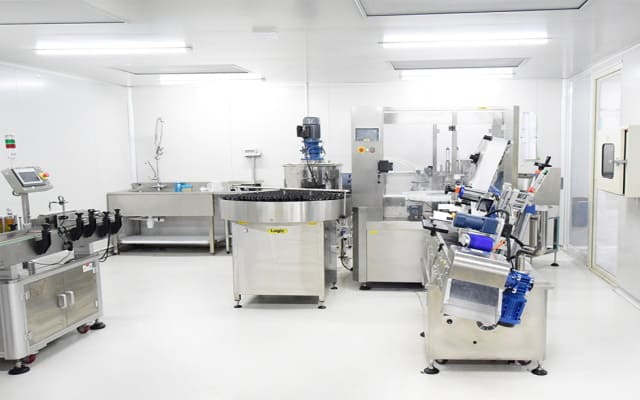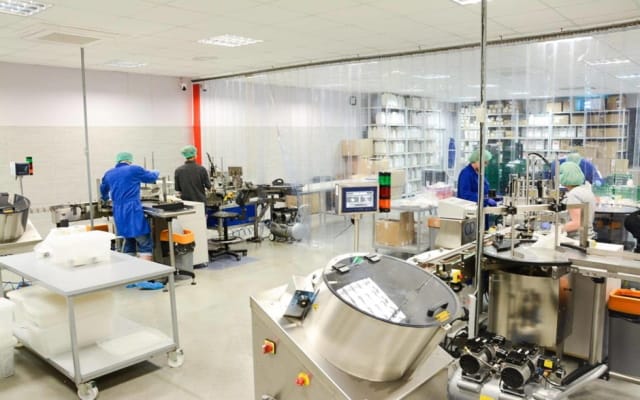As the popularity of vaping continues to rise, so does the demand for high-quality and safe vape juice. In response, the ejuice industry has grown to include a vast network of liquid labs and manufacturing facilities. These facilities specialize in producing cleanroom ejuice and other vaping products using state-of-the-art equipment and stringent safety measures.
According to market research, the global ejuice market was valued at USD 12.4 billion in 2019 and is expected to reach USD 35.1 billion by 2027, growing at a CAGR of 13.4% from 2020 to 2027. As a result, ejuice manufacturing has become a highly competitive and innovative industry, with companies continuously developing new flavors and techniques to meet consumer demand.
Eliquid manufacturers use specialized equipment and cleanroom environments to create vape juice that is safe and consistent in quality. In these liquid labs, precise measurements of ingredients such as propylene glycol, vegetable glycerin, flavorings, and nicotine are mixed together to create unique and flavorful vape juice. This article will delve deeper into the process of how vape juice is made in Premium liquid labs and explore the safety measures and innovations behind the ejuice factory industry.
Ideal Lab Conditions for Making E-Liquid:
A liquid lab that is ISO 9001 certified, has a bespoke ISO Class-7 clean facility, and holds a NSW Poisons License for Schedule 4 (Nicotine) is well-equipped to produce high-quality and safe e-liquids. These features ensure that the lab operates efficiently, consistently, and safely, and that the e-liquids produced are free from contaminants and comply with regulations.
Ingredients commonly used to make vape juice:
Propylene glycol (PG): a colorless and odorless liquid used as a base and to produce vapor.
Vegetable glycerin (VG): a clear, odorless, and slightly sweet liquid used as a base and to produce thicker vapor.
Flavorings: food-grade flavorings are added to provide different taste and aroma profiles to the vape juice.
Nicotine: a highly addictive stimulant that can be added to the vape juice in different strengths (or can be omitted for nicotine-free options).
Distilled water: added to thin the juice if needed.
Please note that mixing vape juice requires precision and careful consideration of the ingredients’ measurements, ratios, and safety guidelines. It is essential to follow proper lab procedures, equipment, and safety measures.
The Process of Making Vape Juice:
Ingredient Preparation: The first step in the manufacturing process is to prepare the ingredients. The main ingredients in vape juice are propylene glycol (PG), vegetable glycerin (VG), flavorings, and nicotine (optional). The ingredients are carefully measured and mixed in a sterile container.
Mixing: The mixed ingredients are then transferred to a specialized mixing machine, where they are blended together. The machine is designed to ensure that the ingredients are mixed thoroughly and evenly.
Steeping: After the mixing process is complete, the vape juice is left to steep. Steeping allows the flavors to blend and mature. The steeping time varies depending on the type of vape juice being made and can range from a few hours to several days.
Filtering: Once the steeping process is complete, the vape juice is filtered to remove any impurities or particles that may be present. The filtering process is essential to ensure that the final product is free from contaminants.
Nicotine Addition: If nicotine is to be added, it is done at this stage. The nicotine is measured and added to the vape juice mixture. The amount of nicotine added is based on the desired strength of the vape juice.
Ingredient Testing: Before any ingredient is used in the vape juice, it must be tested for purity and quality. Testing includes verifying the identity of the ingredient, ensuring that it meets the required standards, and checking for any contaminants.
Batch Testing: Vape juice manufacturers perform batch testing to ensure that each batch of vape juice is consistent in flavor, nicotine strength, and quality. Samples are taken from each batch and tested for flavor, nicotine strength, and purity.
Quality Control: Quality control is an essential aspect of the vape juice manufacturing process. The vape juice is sampled from each batch and tested for purity, consistency, and flavor. The tests are carried out to ensure that the final product meets the required standards.
Bottling: After passing the quality control checks, the vape juice is ready for bottling. The sterile containers used for bottling are carefully chosen to ensure that they are suitable for storing vape juice.
Labeling: The final step in the manufacturing process is to label the vape juice bottles. The label includes information such as the ingredients, flavor, nicotine strength, and any other relevant information.
Summary:
Ejuice manufacturing in liquid labs is a highly regulated and precise process that requires specialized equipment, sterile environments, and strict quality control measures. Vape juice manufacturers must adhere to various regulations and standards to ensure that their products are safe and consistent in quality.
By implementing testing and control measures, such as batch testing, ingredient testing, quality control, cleanroom environments, and compliance with regulations, ejuice manufacturers can produce high-quality and safe vape juice. With the global e-cigarette and vape market projected to reach $50 billion by 2025, the demand for vape juice manufacturing is expected to continue to grow. Liquid labs and ejuice factories will continue to play a crucial role in meeting the demand for high-quality and safe vape juice.



